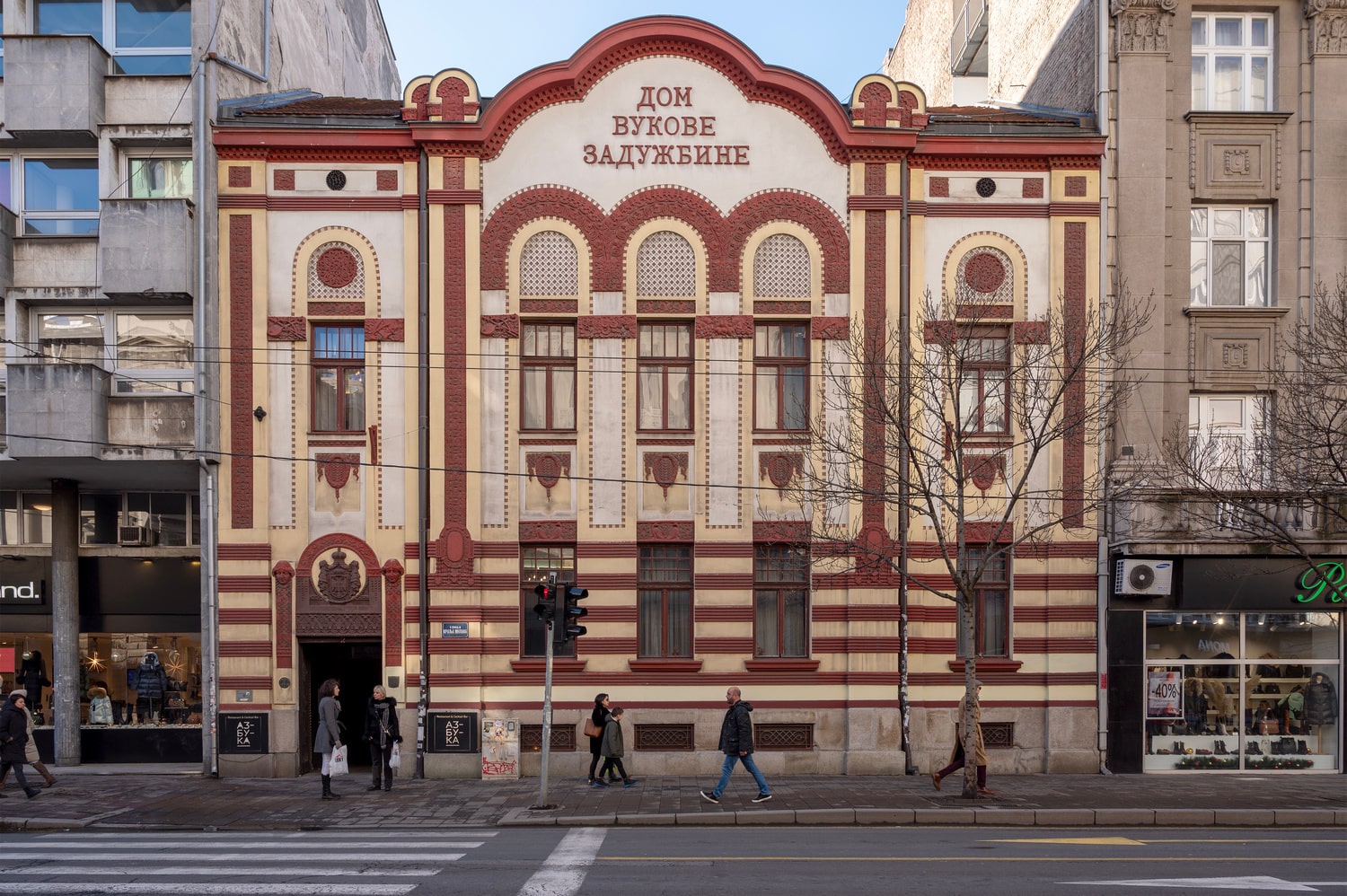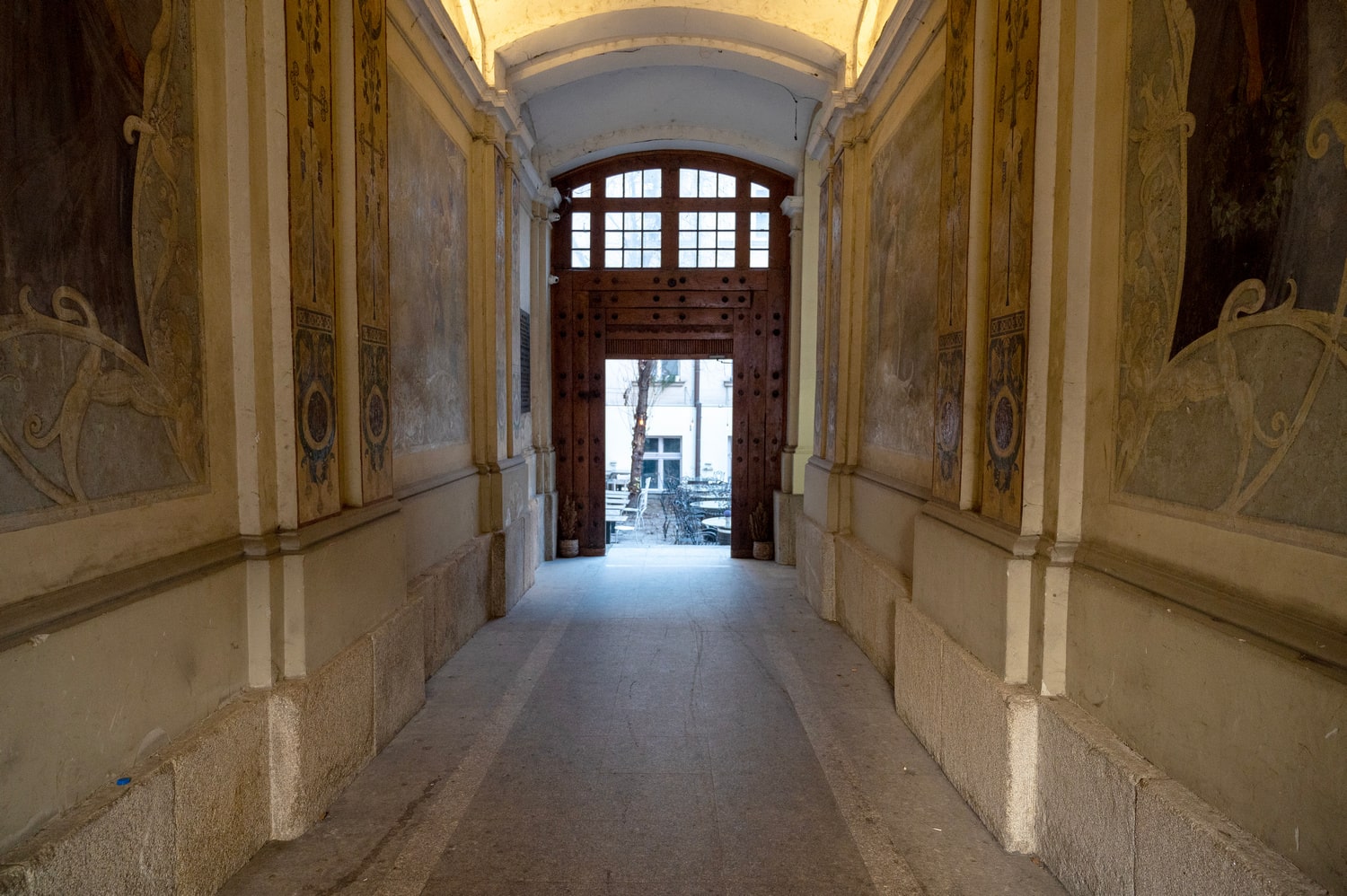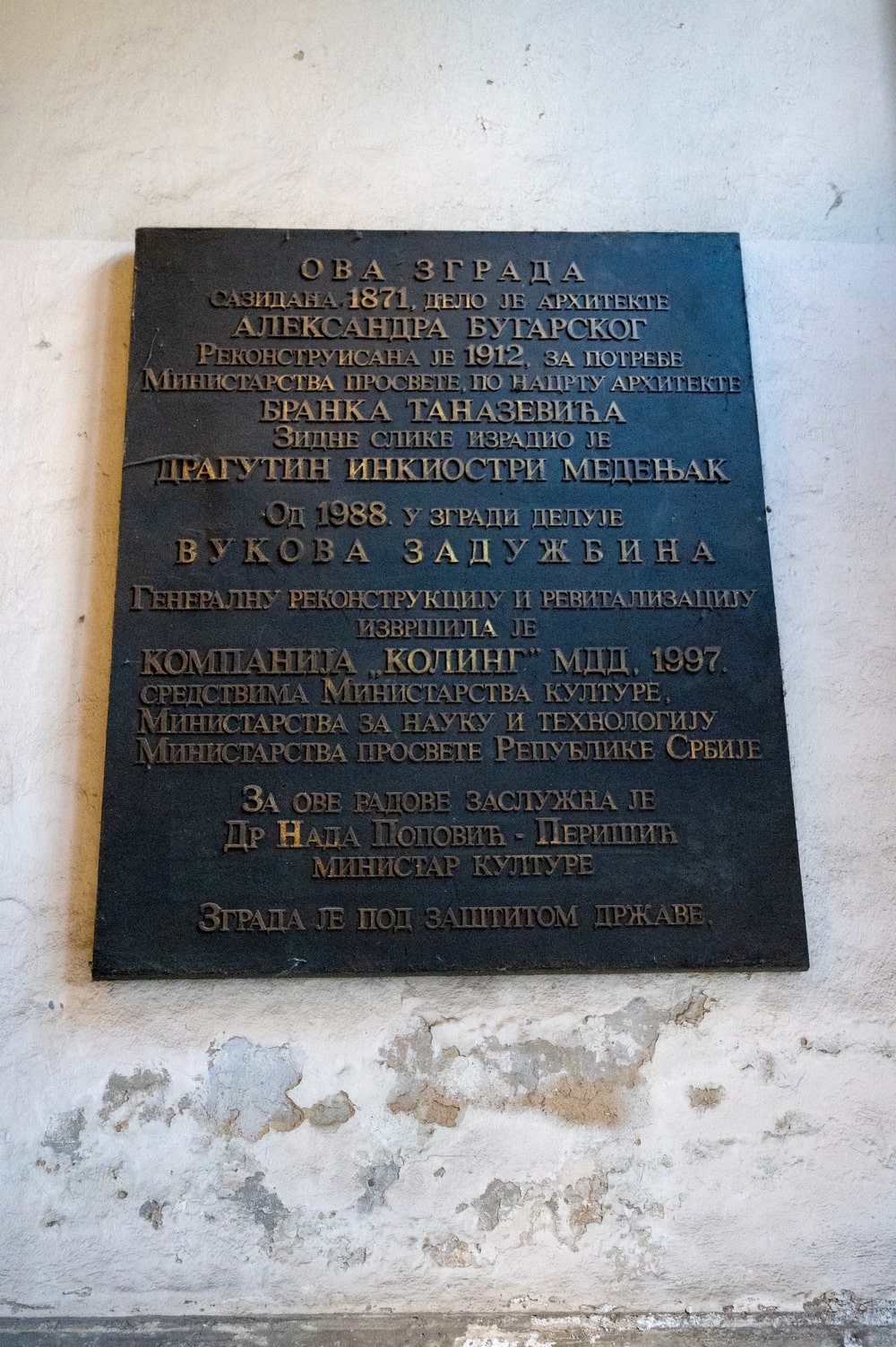Castles of Serbia
Home of Vuk Karadžić's Foundation
Belgrade
Another building that was inspired by the “Serbian Secession”, i.e. the response of Serbian art and architecture to the Secession that flourished in Europe, and especially on the borders of Serbia, in Vojvodina, which belonged to Austria-Hungary, is the House of Vuk Karadžić’s Foundation.
Home of the Vuk Karadžić’s Foundation (Serbian literally: “Endowment”) is the name of the historical building in Belgrade, built in 1879, which houses the Vuk Karadžić ‘s Endowment. Located in Terazije area at Kralja Milana Street 2, it is one of the oldest buildings in that part of Belgrade. Aleksandar Bugarski, a prominent Serbian architect from the 19th century, designed the original building as a two-story house in the academic art style of the time. The building, whose architect was Aleksandar Bugarski, was built in 1870/71 for merchant Dimitrije Mita Golubović.

In the beginning, the building was the headquarters of the Russian Imperial Consulate, then the Serbian Institute for War Orphans, and then it was used by the Ministry of Education in 1879. The smaller courtyard wing was repaired and extended in 1906, and the decorative works in the interior were done by the painter Dragutin Inkiostri Medenjak, who at that time was the only decorative painter in Belgrade. Within these works, he introduced the motif of folk ornament in accordance with the national style. Due to the growth of the Ministry, there was a need to expand the building. It started in 1912 towards the Sava slope. The wing that included the inner courtyard was built by the architect Branko Tanazević, who also worked on the total reconstruction of the main front facade, and a certain similarity with the old telephone exchange can be seen.
Tanazević and Korunović had the idea of constructing Belgrade as a specific city that would be unique in its dominance of the Serbian-Byzantine response to secession, which did not happen under King Alexander I. We can only imagine what the city would have looked like if they had been able to continue their work, and if there had been no First World War. Certainly, the Serbian-Byzantine style in its incarnation at the turn of the century remains perhaps the only autochthonous Serbian architectural style, the so-called “Serbian secession”.

The painter and decorator Dragutin Inkiostri Medenjak was appointed for the interior. The two collaborated on the project, despite being bitter stylistic rivals. Works on the facade and interior were done in the Serbian-Byzantine style according to Tanazević’s project. The last renovation of the Ministry building – the new wing facing Kraljice Natalije Street – was carried out in 1924 according to the project of architect Žarko Tatić.
The building housed the Ministry of Education from 1879 to 1952. From 1880, it housed the Church Department of the Ministry of Education of the Principality of Serbia. In 1914, the building housed the endowment department of the Ministry of Education of the Principality of Serbia. Kingdom of Serbia. In 1919, the Art Department of the Kingdom of SHS and the Kingdom of Yugoslavia moved into the building. Despite the expansion, some departments of the Ministry of Education remained outside the main building. During the period of occupation in the First World War, the building was used as the headquarters of the Main Commissariat of the Austro-Hungarian Army and as the Main Post Office. After the capitulation of the Kingdom of Yugoslavia in 1941, the Ministry of Education was briefly closed, but the German Language Teaching Department was established, which remained in the building until October 1944. The church department was separated from the Ministry of Education in 1944 to form the Ministry of Religion.
In November 1944, the Board for Education of the Republic of Serbia was established, which grew into the Ministry of Education from April 1945-1946. It remained in the building until 1952, when the Federal Institute for Patterns and the Federal Institute for Labour Productivity moved into the space vacated by the reduced Mladost and ULUS papers, among others.
In 1988, two years after the first revitalisation of the facade, the building was assigned to Vuk Karadžić’s Foundation for permanent use and management. The general reconstruction of the building was done in 1997/98. This included work on the ceiling of the hall, stairs and railings, which were successfully reconstructed, and a modern chandelier was added to light the main hall.
In 2006, the front facade facing the street was repaired. In 1996, the Institute for the Protection of the Cultural Heritage of the City of Belgrade published a monograph by the art historian Milojko Gordić about the building that bears the monumental name – the Building of the Ministry of Education.
The façade has been completely preserved. The furniture, made according to the designs of Dragutin Inkiostri, is partially preserved, and several pieces (for example, a chair from the cabinet of the minister) are today in the Ethnographic Museum and the Museum of Applied Art in Belgrade.
Most of the original compositions on the walls were destroyed over time. However, the wall ornaments on the gate to the courtyard are original because they were accidentally painted over after the Second World War. They were discovered by accident in 1963, cleaned and allegorical compositions of religion, education, history and art can be seen on them. They were renovated in 1997. Above the entrance to the building is the coat of arms of the Kingdom of Serbia, embedded in the two-tone, red and white facade in the art nouveau style, with originally incorporated motifs of Serbian medieval architecture, elements of Serbian national tradition, as well as decor.







